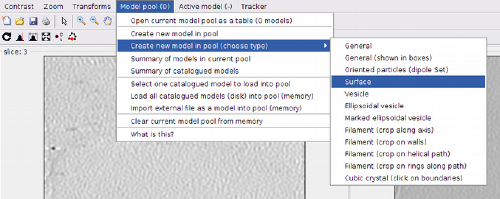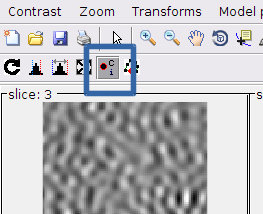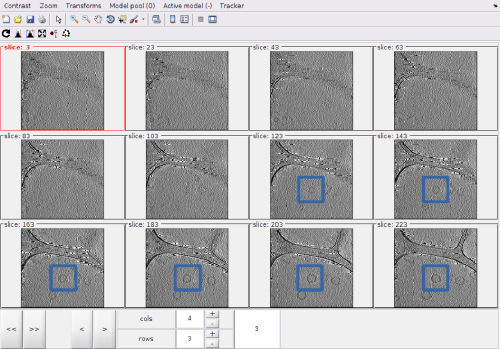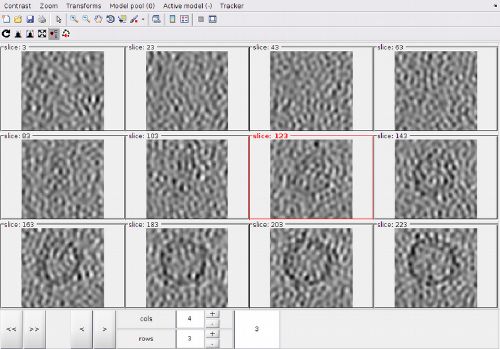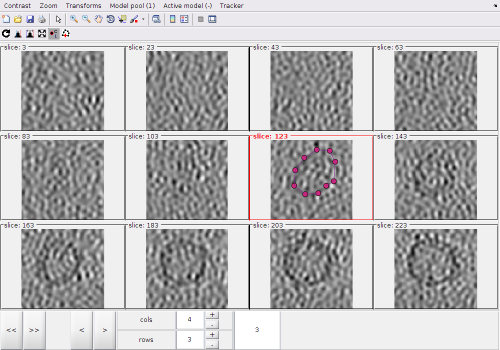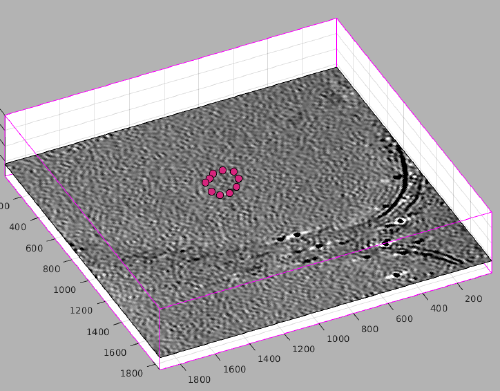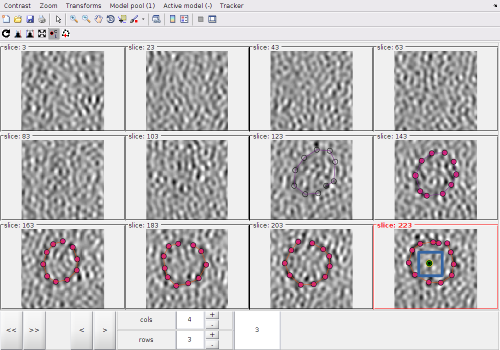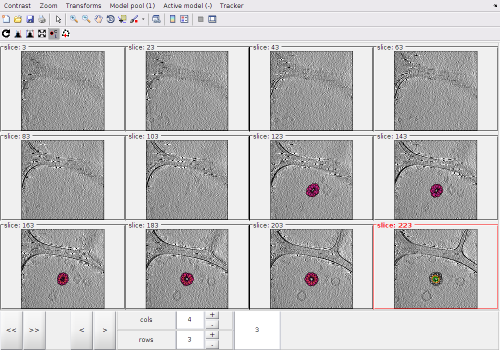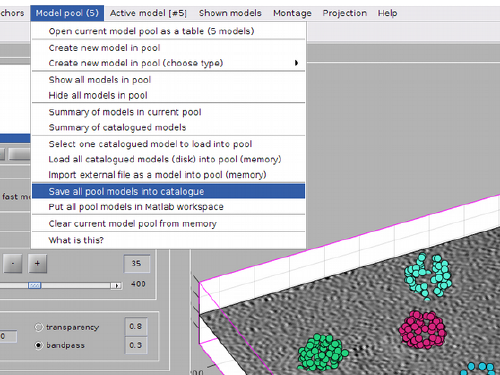Montage viewer for membrane picking
This walkthorugh is an example of use of the montage viewer for membrane models initiated through the tomogram browser dtmslice. We use a tomogram that contains several liposomes. Liposomes can normally be modelled as vesicle models, if they are approximately spherical. If they depart too much from sphericity, you can use membrane models, as done in this walkthrough.
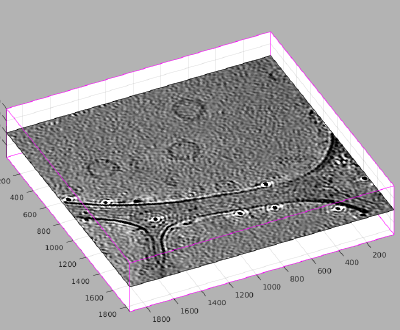
Contents
Starting the Montage Viewer
From the full scene
The Montage viewer can be opened from the menu options in dtmslice. This is the path that we will follow in this walkthrough.
From a region
Remember that you can create a montage for a region in your tomogram. You just need to create a box in dtmslice (key [v]) and then secondary-clik on it. Among different options, you'll find an entry to open a montage viewer.
Options
With the default options, the montage shows at each z level the full projection of the intensity between a level and the next one.
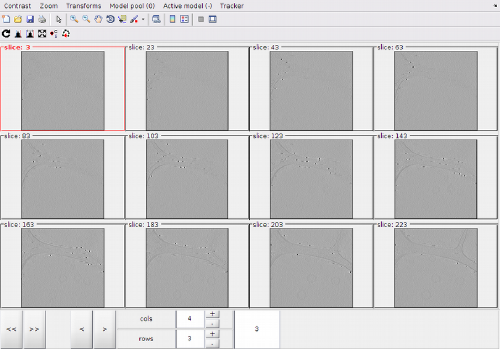
Once you open a Montage viewer, the distance between z-levels is fixed. If you want to vary it, you will need to change the options an then create a new montage.
Model system
The model pool currently accessed by dtmslice is also available through the Montage Viewer. Let us define a membrane model.
Local zoom and drag
We make certain that the clicking option is active. This connects the tools for entering points into the model and to change the viewed scene in the montage (zoom and drag options).
With the full view, can inspect the scene and locate areas of interest.
After selecting the region of interest we can zoom on it, possibly also dragging the scene. Make certain that you are working on the currently active z-level, which appears labelled in red.
- Zoom in and out with the mouse wheel.
- Drag the scene by moving the mouse while the secondary button is pressed
- While the scene is being dragged, the cursor should appear as a hand.
Remember than the clicking tool must be activated in otder to have these controls operative:
Adding points
After activating the clicker, you can (main) click on a z-level of the montage. Each click creates a point.
Other controls:
- [d] : deletes the point in the same z-level that is closed to the current position of the cursor.
- [m] : moves the closest point in the same-ze level to the current position of the cursor.
- [backspace] : deletes the last added point.
The points created by clicking in the Montage Viewer will appear in dtmslice, and the other way round, as both viewers are connected to the same model pool.
Remember that you need to indicate an interior point. This is available through [shift+c].
Automatic detection of points
Once you have clicked points on a level, you can try and check if the automatic tracker can locate them in the next one. To do so, activate the next slice (i.e., secondary click it, so that its frame becomes red), and press o. You can edit the points with d to delete the closest point, m to move the closest point to the position currently under the cursor, or l to delete all the points detected in the slice... in such a case, you probably want to check the tracking parameters before using o again!
Addition of further models
After visiting all the the zlevels where the membrane is defined, we can use the option for zooming out the view:
In this view, we can locate a new area of interest, create a new model and zoom again into the new area of interest. Once you repeat this operation for all your liposomes (one model for liposome), do not forget to save your work into the catalogue.
Once all the models are in the catalogue, you can process all of them in one shot from the command line using a loop on a model array, or by the creation of a model workflow thorugh the GUI.

